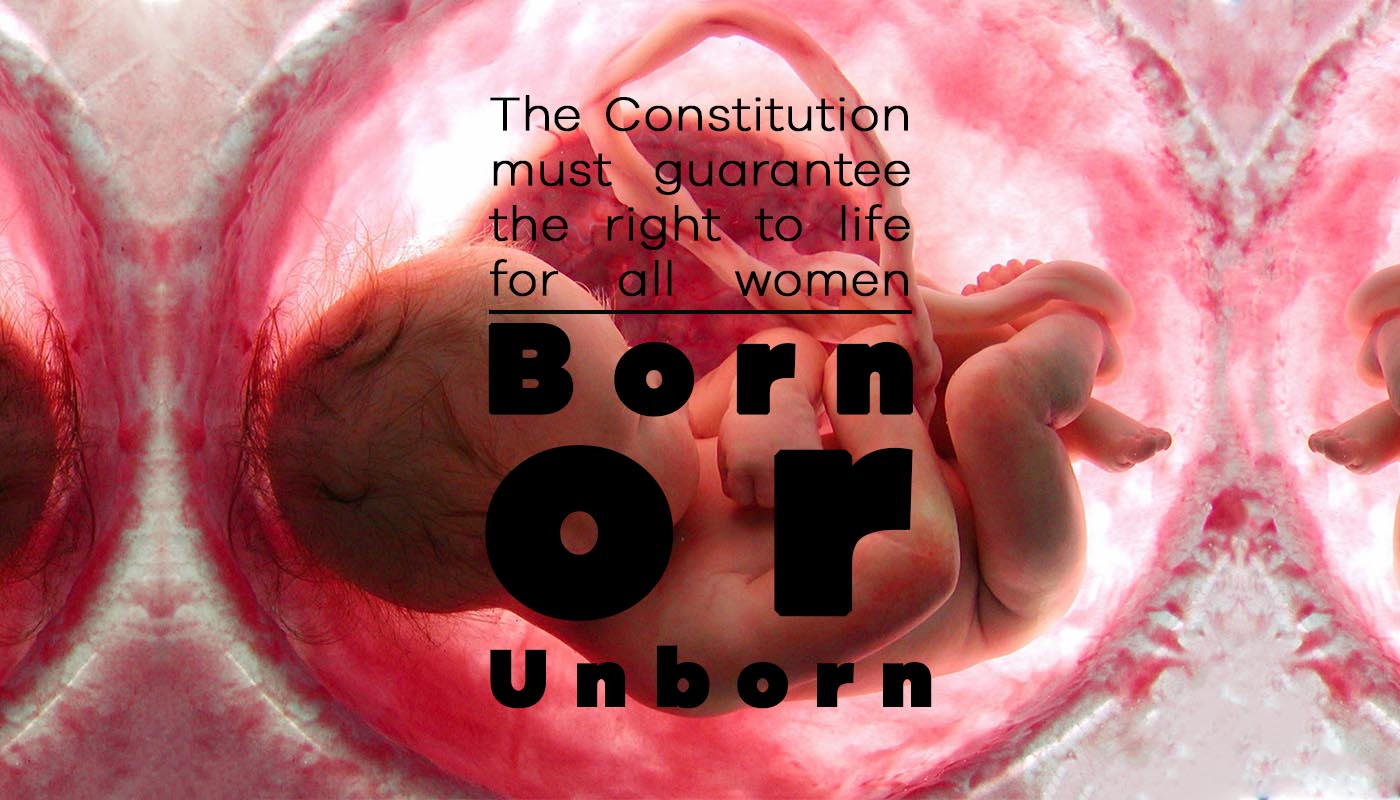Women are murdered all over the world. But in India a most brutal form of killing females takes place regularly, even before they have the opportunity to be born. Female feticide – the selective abortion of female fetuses – is killing upwards of one million females in India annually with far-ranging and tragic consequences.
Female foeticide is the selective abortion / elimination of the female child after about 18 weeks of gestation. Female foeticide is a violation of human right; the female children in the wombs are not only denied the right to live but are robbed of their right to be born. This is usually done under familial pressure from the husband or the in-laws or even the woman’s parents. In our society, many people think that a male child will bring happiness and status in their life, whereas a female child only is a source of constant tension and retribution.
In context of Haryana: Haryana ranks a poor 31 among Indian States and Union Territories on sex ratio with just 877 women per 1,000 men. Though no concrete figures are available on the exact number of female foeticide cases, an estimated 40,000 girls are killed every year in the State before they are born. The fact that Haryana, with just 2.2 per cent of the total children in India, accounts for 4 percent of the female foeticide cases speaks volumes about the extent of problem. Though the law prohibits sex-determination and illegal termination of pregnancy, social workers argue that the situation on the ground has not changed much over the years. “Despite all the laws, the implementation is poor. It is only in certain cases where the senior officials take keen interest in checking the menace that the situation has shown some improvement. Like in Jhajjar, the Deputy Commissioner concerned was strict on illegal sex-determination and took action against even some politically well-connected doctors engaged in the malpractice.
Causes of Female Foeticide:
1. Rural Indian mentality
Many people still believe that daughters are a curse by God in order to punish them for their evil deeds in their last birth. They are a constant source of retribution.The cremation ritual is the most essential in most of the religions in India. A child is expected to perform the last rituals of guardians. It is trusted that cremation through a child guarantees that guardians are honoured with direct entry to paradise. The most seasoned Vedas and Upanishads have coordinated that the significance of such ceremonies and conventions can be accomplished just if the Male child of the family performs them. As there are indefinite religious practices, which is followed by majority in India they blindly abide by its customs and traditions.
2. Dowry System
As dowry has to be given to the bride, therefore parents prefer a boy child who will bring dowry and have a upper hand. The demands of people are increasing day by day and which increases the pressure on bride’s side and this leads to the crime against women. They are even physically and emotionally tortured to bring in more money.
3. Education:
Most of the people think that why should they spend so much money on the education of a girl because she has to go another family and what is the benefit of her knowledge to them.Even if she starts earning then the maternal home won’t get any monetary benefit from her.
4. Gender discrimination:
Son: An Asset, Daughter: A Liability: One of the simplest and most obvious causes is a preference for the male child. Couples prefer a male child over a female one. The bias against females in India is grounded in cultural, economic and religious roots. Males are expected to work in the fields which provide greater income and they are ‘supposed’ to look after parents in their old age. In this way, sons are considered as a type of insurance “Male Children are a Better Investment”.
5. Girl child is considered as a burden:
With the growing number of cases of elopement and inter-caste marriages, people in the villages prefer not to have girls. In urban areas, the working couples want only one child and mostly prefer a boy.” A son is considered to be important for an Indian Society as he upholds the family traditions and ensures their continuance in future. Whereas a daughter is married away and have to adapt to her husband’s family traditions and customs.
6. Protection of Girl in Society:
As there has been a constant increase in violence against women, many families especially mothers believe that giving birth to a girl child will unnecessarily promote crimes like rape, domestic violence, harassment, etc. Such crimes have contributed to an increase in the cases of female foeticide. The parents live under constant fear for the security of their girl child. In today’s society parents feel easier to leave their son alone at home but cannot even think of leaving their daughters alone. Such circumstances can be handled in high-class societies but it is not the condition in the lower-class section of population. In areas like slum and villages daughters are exposed to high level of chances of such crime.
Consequences of Female Foeticide
1. Skewed Sex Ratio:
Female feticide has very long-term effects in the human diversity such as declination in the sex ratio. In India, the number of girls is declining with each passing decade. The child sex ratio is calculated as the number of girls per 1000 boys in the 0-6 years age group and has consistently declined from 976 girls per 1000 boys in 1961 to 945 in 1991 and 914 in the 2011 census. In India, the child sex ratio is not uniform across states. States like Haryana, Punjab, Delhi, Himachal Pradesh and Gujarat and union territory of Chandigarh, the ratio has declined to less than 900 girls per 1000 boys.
2. Increase in Rape and Assault:
Once women become an endangered species, the instances of rape, assault, and violence become widespread. When there are fewer available females, the surviving ones will be faced with the reality of handling a society driven by a testosterone high. The legal system may offer protection and, as is the situation today, many crimes may not ever surface for fear of isolation, humiliation, and punishment on the girl’s part.
3. Population Decline:
With no mothers to bear children (male or female), there will be fewer births, leading to a decline in population. Though population control is currently the goal of many nations like China and India, a total wipe-out of one sex is not the way to achieve this target.
Prevention and Solution
There are many facilities given by the government and steps taken to improve the status of the women in the society. They are provided with greater opportunities in education, employment and in matter of governance that is their seats are reserved in the school, colleges and even in the parliament. They are provided with almost free education, loans with zero percent interest and many other things that make the parents less burdened.
The government launched so many programs few of them are as:
- Save the Girl Child Campaign
- Beti Bachao Beti Padhao,
- Awareness and sensitization campaigns
2017 was dedicated as the ‘Women Empowerment Year’ (Nari Shakti) as declared by PM.
The issues of female infanticide, female feticide, and selective sex abortion have gained global attention, and many international and national law-making bodies have come forward to stop this cruel practice. Of the numerous steps taken to curb the matter, the prominent ones are:
- Cancellation/permanent termination of the doctor’s license who aborts a foetus simply because of its gender.
- Heavy penalty imposed on companies like GE that specialize in marketing medical equipment used for illegal sex determination and abortion in unlicensed clinics and hospitals.
- High fines and judicial action against parents who knowingly try to kill their unborn baby.
- Widespread campaigns and seminars for young adults and potential parents to enlighten them about the ill effects of female foeticide.







Leave a Reply